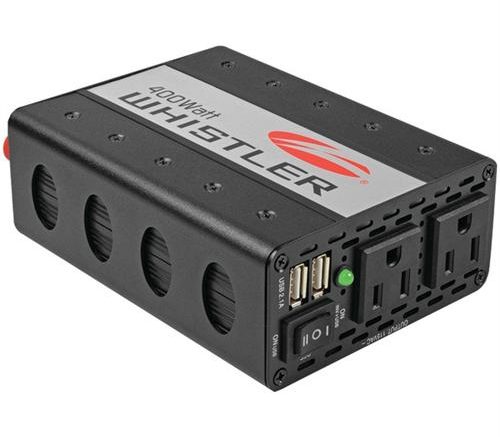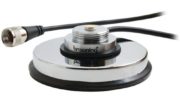It’s like having a little power plant in your car. Let’s start with the basics: there are two kinds of electrical current. DC, that is Direct Current, is the most basic. It’s better for storage, it travels well over long lines, and it’s easy. It’s also kind of deadly at higher voltages and it’s not really optimal for use in home wiring. AC, that’s Alternating Current, takes DC and makes it pulse at a fixed rate. This makes it a little safer, and this feature was better for appliances that relied on some sort of timing, before the advent of quartz crystals.
That’s simplifying things a bit, but here’s what you really need to know: if you plug it into the wall, that’s AC. If you get it from battery power, that’s DC. If it uses a power brick or wall wart, the device is really DC and it’s using the power brick to convert to DC.
Converting from AC to DC is pretty easy, you just need to smooth out the pulses. Converting from DC to AC, that’s a trick. That’s what an inverter does. It creates the pulsing sine wave that helps alternating current, well… alternate. That’s its whole purpose. Usually there’s also a transformer which converts from one voltage to another.
Here’s why you care…
because an inverter will convert from the DC current in your car into AC current so you can plug in anything you want. Well almost anything but I’ll get to that in a minute. The 12 volt DC current is transformed to 110 volt AC current, perfect for running a TV or anything you want. It’s not the cleanest current around so you may want to have a decent surge protector if your devices are extremely sensitive.
The key here is to pick the wattage that makes sense for you. The lighter socket in your car cannot handle too much power (up to 400 watts in some cases) but if you are willing to permanently mount the inverter in your car you can get up to 5000W ones. Of course, a heavy-duty truck battery is a good idea at that point. The key is to look at the thing you want to plug in. Every device has to list the draw of its power supply somewhere, either in watts or in volts and amps. If all it lists is volts and amps, then multiply one by the other to get watts. A 5 volt, 2 amp power supply like a cell phone charger is 10 watts because 5×2=10.
Take a look at the great selection of inverters we have at Solid Signal, and choose the one you need. Personally I’m a fan of the Whistler XP200i and XP1200i, which really hit the sweet spot. The real difference between them is how much power they supply. If you don’t need more than one device, choose the less expensive one. Neither of them is going to power your whole home, but for a computer or small fridge, they’ll work great.





